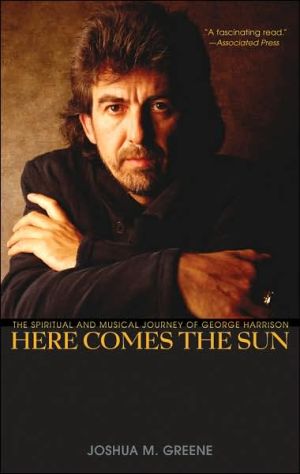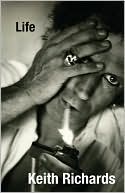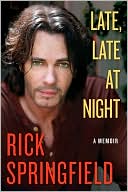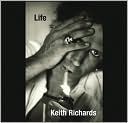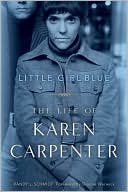Here Comes the Sun: The Spiritual and Musical Journey of George Harrison
"It is a story like none other: George Harrison reached the glittering pinnacle of musical superstardom as a Beatle - then gave up the quest for fame in his search for God. In this unique and intimate biography, Joshua Greene, who studied under Harrison's yoga teacher and recorded with the former Beatle, provides a moving portrait of one of the twentieth century's most extraordinary people. In Here Comes the Sun, Greene draws on surprising firsthand acounts and dozens of transcripts of...
Search in google:
"Many well-known artists have touched people's hearts with their music, but few have ever succeeded in touching people's souls. That was George's gift, and his story is described here with affection and taste. A wonderful book." —Mia Farrow "There is a palpable excitement to this book that made me feel I was there, with George, on his journey. . . . Extraordinary." —Martin Rutte, coauthor of Chicken Soup for the Soul at Work "The depth of insight into Harrison's inner life is great." —Yoga Journal Here Comes the Sun tells the story of George Harrison's musical and spiritual journey with more detail and immediacy than in any other book about Harrison or the Beatles. Like his fellow Beatles, Harrison escaped the streets of working-class Liverpool, survived a tough musical apprenticeship in underground clubs, and became one of the most famous and successful musical artists in history. Before long, though, disillusioned with both the price and rewards of celebrity, he began the journey that would transform his music and redefine the rest of his life. Joshua Greene, who studied meditation with the legendary Beatle, draws on personal remembrances, recorded conversations, and firsthand accounts to create a moving portrait of Harrison's spiritual life and his profound musical vision. This is a fresh and highly rewarding book for Beatles fans as well as for any reader interested in the spiritual path. Publishers Weekly Author and film producer Greene focuses on the metaphysical in his examination of George Harrison, choosing to document the Beatle's relationship with Hindu philosophy and Krishna devotees over his more complex-though admittedly well-covered-relationship with his bandmates. The resulting portrait is at times flat, as Harrison gets along with just about everyone on his spiritual path, and Greene is reluctant to cast his subject in a negative light. That's a shame, as the highlights of the book feature a conflicted and embattled Harrison dealing with disappointment, frustration and loss, of which there is plenty in the Beatles' shared history. (Jan.) Copyright 2005 Reed Business Information.
Click to read or download
Preface. 1 Beginnings. 2 George among the Savages. 3 A Price to Pay. 4 A Father to His Spirit. 5 Rebirth. 6 In the Land of Gods. 7 Devotees. 8 Looking for Krishna. 9 All Things Must Pass. 10 The Sky beneath His Feet. 11 Dark Horse. 12 Laws of Nature. 13 Sacred Ground. 14 Going Back. Afterword. Acknowledgments. Notes. Credits. Index.
\ Publishers WeeklyAuthor and film producer Greene focuses on the metaphysical in his examination of George Harrison, choosing to document the Beatle's relationship with Hindu philosophy and Krishna devotees over his more complex-though admittedly well-covered-relationship with his bandmates. The resulting portrait is at times flat, as Harrison gets along with just about everyone on his spiritual path, and Greene is reluctant to cast his subject in a negative light. That's a shame, as the highlights of the book feature a conflicted and embattled Harrison dealing with disappointment, frustration and loss, of which there is plenty in the Beatles' shared history. (Jan.) Copyright 2005 Reed Business Information.\ \ \ \ \ Library JournalHistorian and Emmy-nominated writer and filmmaker Greene studied with George Harrison's guru and recorded Hindustani devotional music with the former Beatle at one point in the 1970s. Drawing on those experiences, he attempts an overview of Harrison's life and musical career, but there is an unfortunate focus on his spirituality; readers will not find much on Harrison's music. To his credit, Greene studiously avoids the tabloidlike nature of some earlier Harrison biographies (e.g., Geoffrey Giuliano's Dark Horse: The Life and Art of George Harrison). This, however, is a mixed blessing, as the overall biographical material seems fairly general and at times sketchy, except when it comes to Harrison's spiritual path. The Beatles period in particular could be more detailed. This book, illustrated with 20 pages of black-and-white photographs, will interest Harrison and Beatles fans, but it is neither a definitive guide to Harrison's music nor a truly comprehensive biography. Recommended for larger public libraries with significant popular culture collections.-James E. Perone, Mount Union Coll., Alliance, OH Copyright 2005 Reed Business Information.\ \ \ Kirkus ReviewsA friend of George Harrison offers informed reflections on the late musician's spiritual quest. Out of the insanity, claustrophobia and estrangement that came with being a member of the Beatles, Harrison emerged an affected man, in search of God and peace. Filmmaker/biographer Greene (Justice at Dachau, 2003, etc.) portrays his friend as introspective and modest, inspired by an experience with LSD (‘ "From that moment on, I wanted to have that depth and clarity of perception," ' Harrison told Rolling Stone.) Harrison reached beyond intoxicants into the bliss of yoga and cosmic chants, a buzz that took him "into the astral plane." He wanted others to share his contact with the mystical and spoke of his spirituality during concerts, where his comments were met with, at best, indifference. Though he spent considerable time exploring the Hindu religion, writes Greene, the musician was a restless quester, always looking for ways to put his spiritual house in order. Greene writes of a newfound "levelheaded dispassion" as Harrison moved into his sixth decade, a sense of liberation from the material world coupled with an affirmation of nature and a personal recognition of his place in the scheme of things. Greene presents a man deeply engaged in the world he longed to transcend.\ \ \ \ \ From the PublisherIt has always seemed to me a convincing proof of the greatness of the Beatles that the bulk of "The White Album"—that voluptuous crack-up of a record, full of smut and lunacy—was written at a meditation camp in the Himalayas. Geniuses that they were, at Rishikesh, India, the Beatles answered the pull of the transcendental with an equivalent downward thrust of their own; commanded by the Maharishi Mahesh Yogi to focus on bliss, nothingness, and the white light of eternity, they came up with "Why Don't We Do It in the Road?" and "Everybody's Got Something to Hide Except Me and My Monkey." Apart from George Harrison, that is. While John and Paul strummed and swapped their ribaldries, and Ringo went home early with tummy trouble (too much spicy food), George was rigorous, sober, down with the program. It had been his idea to go there, after all. His best Rishikesh songs are solemn and beautiful: the devotional murmur of "Long, Long, Long" and the elegiac "While My Guitar Gently Weeps." And according to Joshua Greene's "Here Comes the Sun: The Spiritual and Musical Journey of George Harrison," in his solemnity the heavy-browed young guitarist would remonstrate with his fellow Beatles: "Too much time spent writing . . . struck George as a distraction from their purpose in coming to India, and he said as much. 'We're not here to talk music. We're here to meditate.' 'Calm down, man,' Paul said. 'Sense of humor needed here, you know.'"\ Perhaps a spiritual biography is humorless by definition. The spirit doesn't tell jokes; it strives wordlessly for perfection. One reads of course of the constant merriment of the Dalai Lama, and the Maharishi himself was apparently quite prone to the giggles, but the mirth of these sages seems to be of a very rarefied and cosmic order. Earthly laughter—the guffaw, the yip, the cackle—is different, and there isn't too much of it in "Here Comes the Sun," suffused as it is with the earnestness of the seeking soul. Greene, who met George through London's Radha Krishna Temple in the 1970s, has efficiently separated from the mass of Beatle data the single thread of his subject's religious endeavors, and writes of them with the unblinking identification of the fellow devotee. "George had discovered singing God's glories through the Krishna mantra," we read on Page 145. "It made him feel good; it was easy and musical. How wonderful to think that God played a flute, that he was a musician." What we have here, not to put too fine a point on it, is new age prose—moon-faced, quietly zealous, and limpidly free of skepticism.\ On the other hand, this is rather the key in which the story of guru-hungry George demands to be written. The story of Paul, flashing his two raised thumbs like a pair of small horns, necessitates a different approach. Christopher Sandford's "McCartney," with wit and some bemusement, paints the jaunty "head Beatle" as a comic figure on the very grandest scale: an irrepressible entertainer, a stranger to doubt, absurdly vital, rebounding from vicissitude, part of humanity's immune system. A key moment occurs in January 1980, when the first Wings tour of Japan is derailed on arrival by the discovery at Narita Airport of what McCartney would later refer to as "a bloody great bag of pot right on the top of my suitcase." The Japanese customs officers are not amused, and McCartney is promptly incarcerated. Things look bleak; there is the prospect of a long sentence, even hard labor. To console himself, the prisoner performs an impromptu medley of show tunes and Beatles standards for his fellow detainees, thus granting his future biographer the following prize-winning image: "McCartney had finished Toot, Toot, Tootsie, Goo'bye' and was nearing the end of 'Hey Jude' when the consul came."\ This is essence of McCartney: The Fabness—a twinkling amalgam of professionalism, personal toughness, and showbiz brio—cannot be dented. It drove the other Beatles mad, of course. As background noise to McCartney's monstrously lucrative solo career, Sandford gives us the nonstop whine of disapproval from the Dakota Building: "Sell-out. . . . crowd pleaser . . . about [as] underground as my granny." Lennon-McCartney: the partnership that became a dialectic. The sharp-nosed contrarian vs. the worldwide song-and-dance man, etc. In fact, as McCartney has been at pains to stress in recent years, it was he, rather than the rock 'n' roll-loving Lennon, who was the Beatles' real innovator. This is one of the more fascinating strands of Sandford's book—the gradual division of powers within McCartney between the avant-gardist, fan of musique concrete, and the composer of million-selling chirpy tunes. Thrillingly integrated in a record like ''Revolver," by the '80s these two personae were almost entirely distinct, as McCartney seemingly wrote ''Ebony and Ivory" and ''The Frog Song" with one hand while doodling esoterically with the other. The natural result was a measure of dissociation in both realms. Asked by the producer of his first Fireman album (an incognito foray into electronica) if he had any thoughts for a second one, McCartney handed over a note: ''The Fireman brings bison for trancing in the streets. The Fireman knows a lemon's peal . . . The Fireman understands darsh walls & emerdeen sky. Do you?" And yet the magic touch is never lost. For 30 years and more, the hits keep coming, some of them written in five minutes. Money and honors rain down. With no apparent strain he graduates from an orgiastic bachelorhood (Lennon called him a "sex gladiator") to an almost religiously devoted marriage: Mother Nature's son, truly.\ At the other end of the scale from the luminosities of "Here Comes the Sun" and the brisk, hilarious "McCartney" we have "Reading the Beatles: Cultural Studies, Literary Criticism, and the Fab Four," edited by Kenneth Womack and Todd Davis, which is all knotty with cogitation and argument. Some of the writing is excellent: Walter Everett's "Painting Their Room in a Colorful Way: The Beatles' Exploration of Timbre" marries dense technical detail to a dizzy, almost Walter Pater-esque sensuality. We learn, for example, that the horns in "Got to Get You Into My Life" are "miked in the bells when possible for an unnatural restriction of emphasized partials," but also that Beatle music contains "aural analogues of the satins that come in chartreuse, fuchsia, sky blue and tomato." And a small cheer goes up from the readership when James M. Decker, in "Baby, You're a Rich Man: The Beatles, Ideology and the Cultural Moment," describes the Beatles' folio-size "Anthology" book as "obscenely priced at $60." Elsewhere, however, we are depressed to find such Flann O'Brien-like statements as "The perpetually enigmatic 'And Your Bird Can Sing' traffics extensively in various negations" and "Whitley argues convincingly that the extensive use of bricolage makes 'The White Album' a postmodern work." Which is not to say that these statements are without insight, but simply to observe that this is a book written largely by professors for professors, and to suggest that—having peeped in—we quietly withdraw and leave them to it. (Boston Globe, February 19, 2006)\ A friend of George Harrison offers informed reflections on the late musician's spiritual quest.\ Out of the insanity, claustrophobia and estrangement that came with being a member of the Beatles, Harrison emerged an affected man, in search of God and peace. Filmmaker/biographer Greene (Justice at Dachau, 2003, etc.) portrays his friend as introspective and modest, inspired by an experience with LSD ("From that moment on, I wanted to have that depth and clarity of perception," Harrison told Rolling Stone.) Harrison reached beyond intoxicants into the bliss of yoga and cosmic chants, a buzz that took him "into the astral plane." He wanted others to share his contact with the mystical and spoke of his spirituality during concerts, where his comments were met with, at best, indifference. Though he spent considerable time exploring the Hindu religion, writes Greene, the musician was a restless quester, always looking for ways to put his spiritual house in order. Greene writes of a newfound "levelheaded dispassion" as Harrison moved into his sixth decade, a sense of liberation from the material world coupled with an affirmation of nature and a personal recognition of his place in the scheme of things.\ Greene presents a man deeply engaged in the world he longed to transcend. (Kirkus Review, November 1, 2005)\ \ \
